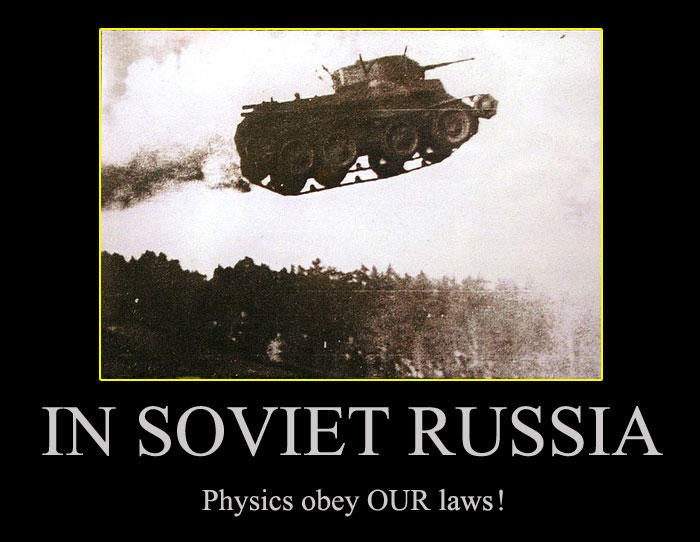
If you know anything about watches and watchmakers, the phrase “Russian watch” probably fills you with incredulous amusement. It should not be possible for the Russians to make a watch that is:
A) Totally reliable;
B) Extremely rugged;
C) Very good value for money;
D) Fashionably designed;
But you would be wrong. The Russians have been in the watchmaking business for a very long time, and they understand a few things about how to make watches that allow them to make timepieces that are competitive with Swiss and even some Japanese offerings in terms of reliability, toughness, and efficiency.
You wouldn’t buy a Russian watch because it wouldn’t occur to you to do so. The Russians are singularly bad at marketing themselves and their products, overall. Yet, if you spend any serious time within Russia and get to know the Russian people themselves, you will quickly learn to like and appreciate their rough, coarse, down-to-earth, yet soulful and romantic nature.
They produce their watches, and food, and icons, and pretty much everything else that they make, as expressions of that nature.
And, increasingly, their simple, no-nonsense approach to doing things is paying dividends – especially against American competitors who are bogged down by all sorts of politically correct nonsense and progressive (read: regressive) shibboleths about “muh diversity” and “muh inclusiveness”.
The reason I bring this up is not because I actually want to talk about watches.
No, I bring it up because the Neo-Tsar took to his bully pulpit recently to point out the increasing edge that the Russians have in both conventional and hypersonic weaponry against the Western powers:
Russia is spending far less on defense and more efficiently, developing a series of advanced weapons that its rivals are struggling to copy, President Vladimir Putin said, teasing a ground-launched hypersonic missile.
The Soviet Union was always trying to catch up to the US, whether it was the atomic bomb, strategic aviation, or the first intercontinental missiles, Putin said on Tuesday, during a meeting of the Russian Defense Ministry Board.
The president noted that “not a single country possesses hypersonic weapons, let alone continental-range hypersonic weapons,” but the Russian military is already equipped with Kinzhal air-launched missiles, while Avangard hypersonic gliders are currently being introduced in service.
Kalibr cruise missiles and Peresvet combat lasers also recently boosted the capabilities of the military, while the development of other state-of-the-art weapon systems such as the Sarmat ICBM, Poseidon long-range underwater drone, and the nuclear-powered Burevestnik cruise missile is “going according to plan.”
The first thing to understand about the Russian mindset is that they focus on what works rather than what looks good, first and foremost. They build their weapons to be used and abused, hard. That is why, if you compare a Russian airbase to an American one, you might be shocked to find that the Russians have no problem letting the grasses grow long, and don’t particularly mind if their runways are strewn with minor amounts of small particulate matter.
American base operators would find such untidiness to be utterly horrifying. Long blades of grass can get torn up by the suction from turbofan engines and the resulting debris can scratch up the canopies and paint jobs of those brand-spanking-new $135M flying pianos that the Americans keep giving their air wings to use. Ditto with the debris on the runways, which can get sucked straight into the engines and wreck the turbine blades, thereby giving anyone in the cockpit a VERY bad day.
Americans create exquisitely overengineered works of art masquerading as engineering. (This is NOT a universal truth. Quite a few American weapons of war are designed specifically to be used hard and still work – the M1-A3 Abrams platform comes to mind, for instance. But for every such example, you get another like the Stryker, which is very overengineered.)
But as generalisations go, it’s not a bad one. And that difference in mindset also extends to the way that each country spends its respective defence budget:
The Saker provides an interesting alternative perspective on the way that the Russians use their military and weapons systems, wherein they bank on increasingly specialised and high-tech platforms in small numbers, manufactured efficiently and at relatively low cost, to counter the much more expensive and capable, but VASTLY over-engineered, American and Western solutions:
Frankly, the Kuznetsov was a pretty decent ship, especially considering its rather controversial design and the appalling lack of maintenance. She did play an important role in Syria, not thanks to her airwing, but to her powerful radars. But now, I think that it is time to let the Kuznetsov sail into history: pouring more money in this clearly antiquated ship makes no sense whatsoever.
What about new, modern, aircraft carriers?
The short answer is: how can I declare that the USN has no rational use left for its aircraft carriers and also say that the Russian case is different and that Russia does need one or perhaps several such carriers? The USN is still several decades ahead of modern Russia in carrier operations, and (relatively) poor and (comparatively) backward Russia (in naval terms) is going to do better? I don’t think so.
Then, there is one argument which, in my opinion, is completely overlooked: while it is probably true that a future naval version of the Su-57s (Su-57K?) would be more than a match for any US aircraft, including the flying brick also knows as F-35, Russia STILL has nothing close to the aging but still very effective carrier-capable USN Northrop Grumman E-2 Hawkeye. Yes, Russians have excellent radars and excellent airframes, but it is one thing to have the basic capabilities and quite another to effectively integrate them. As always, for Russia, there is the issue of cost. Would it make sense to finance an entire line of extremely costly aircraft for one (or even a few) aircraft carriers?
We need to keep in mind that while Russia leads the world in missile technology (including anti-shipping missiles!), there are many countries nowadays who have rather powerful anti-ship missiles too, and not all are so friendly to Russia (some may be at present, but might change their stance in the future). Unless Russia makes a major move to dramatically beef-up her current capabilities to protect a high-value and very vulnerable target like a hypothetical future aircraft carrier, she will face the exact same risks as all other countries with aircraft carriers currently do.The Russians also have a new submarine out
Put simply, the Russians have put their focus on deterrence and defence of the homeland, not on maintaining a vast overseas empire. That is why they have slimmed down their military significantly. If you do a point-by-point comparison between the two nations, what you will quickly realise is that the USA has a vastly more powerful and modern military, even though the Russians have significant numerical advantages in a number of areas.
The thing is, though, that the Russians know perfectly well that their numbers count for little. Much of their technology is Soviet-era junk that is in desperate need of modernisation and upgrading.
That is why they have developed the Su-57, to give Russia a true modern fifth-generation fighter – but it is far cheaper than its American counterparts, and it isn’t being ordered in large numbers.
That is also why they have developed the T-14 Armata, a technologically advanced but still very Russian answer to the M1 Abrams. Can it go up against the venerable Abrams and win? We don’t know and in all honesty, I hope we never, ever have to find out. But it is clear that the Russians are aiming to buy small numbers of advanced fighting vehicles that they can use to refit their combat regiments.
Cost has a lot to do with this as well. The Russians simply cannot afford to spend the kinds of sums that Americans can on their military. America can afford to run mind-breaking deficits because it holds the world’s reserve currency. Running multi-trillion-dollar deficits, and racking up well over 100% of its annual output in debt, along with hundreds of TRILLIONS of dollars of unpaid and unpayable future liabilities, is relatively easy when you can simply print your way into oblivion.
But, slowly yet surely, the Russians are doing what they can under extremely difficult circumstances to turn their military into a technologically advanced, balanced, battle-hardened, defensively-oriented fighting force.
They are producing fast and silent new submarines which can project the Russian defence umbrella well past the country’s (vast) borders, and which could at least deter American carrier battle groups from approaching the motherland.
Their Su-57 is too expensive for them to buy in large numbers, but everything that I have seen indicates that, once they get past the power issues with its current engines, it will fly circles around the F-35.
The T-14 is, again, too expensive to be bought in large numbers, unless Russia decides to do some SERIOUS deficit spending and jack its debt up significantly to rearm its military. But… why would it?
The reality is that the Russians are not about to go to war with Europe. It’s simply not going to happen, regardless of the endless bleating and screaming of all of the numpties who keep seeing MUH RUSSIA!!! behind every stone.
The Russians do not have the manpower or strength to do it. They are NOT the Evil Empire anymore, and the sooner that Westerners get over their absurd fear of them as such, the better off everyone will be.
The Russians are, however, technically savvy and skilled engineers who can work with limited resources and under very difficult conditions to beat just about anyone they go up against.
Just ask Google. They still can’t penetrate the Russian market and capture share from Yandex – despite having vastly greater resources and (supposedly) the smartest people in the world.
In conclusion, the Russian design philosophy is changing and it is affecting the way that their military fights and plans for wars. But it is still quintessentially Russian, in that it focuses on effective solutions for difficult problems, instead of trying to impress Pentaloons in fancy uniforms and provide endless gravy troughs for military contractors. There is plenty of pork in the Russian way of doing things, to be sure – but, given that the Russian military budget is barely 11% of the American one, there’s quite a lot less of it.
And if the day ever comes – heaven forfend – that the American military tries to take on the Russian hypersonic missile defence umbrella, or tries to pit one of its Joint Strike Flying Pianos against an Su-57, then we will likely see just how much better the Russian way of doing things really is.














0 Comments